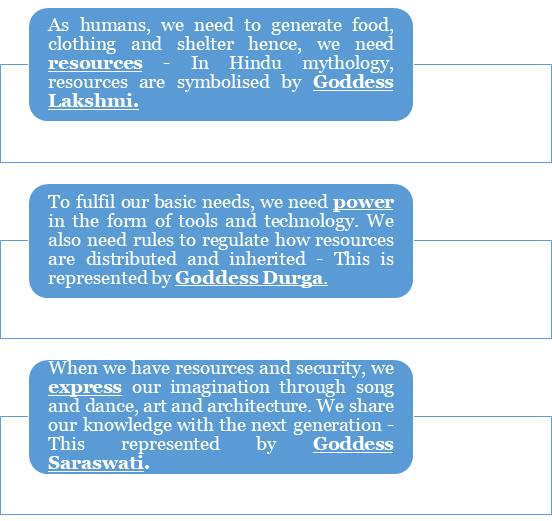Subject experts opine that there is a need for a new definition of a culture and civilisation.

|
|
Culture |
Civilisation |
|
Meaning |
A term used to denote the manifestation of the manner in which we think, behave and act. |
It refers to the process through which a region or society, outstretches an advanced stage of human development and organization. |
|
Basis |
It is more psychological and about values |
It is more material and about goods, technology, art and architecture.
|
|
Components |
It is a people’s belief systems, rituals and customs |
It is a complex culture with hierarchy, complex organisations, and ruins of public buildings and monuments.
|
|
Representation |
Culture is what we are |
Civilisation is what we have |
|
Reflected in |
Religion, art, dance, literature, customs, morals, music, philosophy, etc. |
Law, administration, infrastructure, architecture, social arrangement, etc. |
|
Expression |
Higher level of inner refinement |
Higher level of general development |
|
Interdependency |
Culture can grow and exist without civilization |
Civilization cannot grow and exist without culture |
|
Trade system of Harappan civilisation |
|
|
Trade system of Andaman Tribe |
|
|
Diversity in Indian Culture |
|
Indian Express| Culture and Civilisation